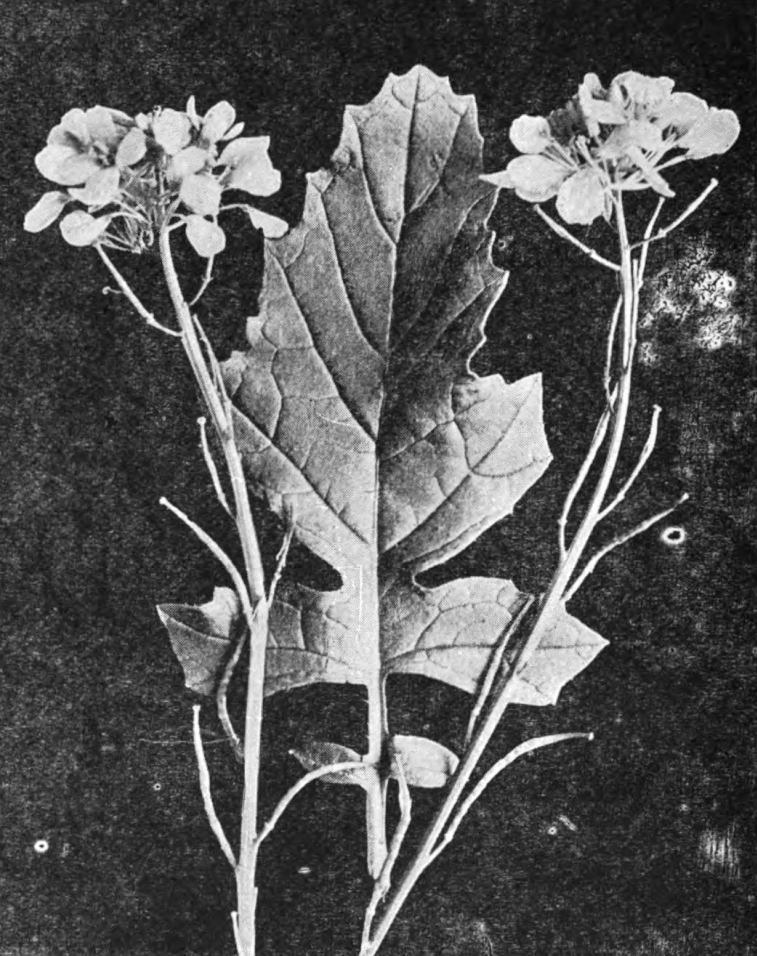
Black Mustard.—Photo by J. H. Lovell.
spikeweed (C. pungens) produces considerable honey in the San Joaquin Valley of California.
JESSAMINE (Gelsemium sempervirens). Evergreen woody vines climbing over fences and shrubs with large yellow, trumpet-shaped flowers. Jessamine occurs from eastern Virginia south to Florida and Texas where it blooms in the winter and spring. According to A. H. Alex, a heavy loss of brood may occur where the vine is being worked by bees in Texas. Several beekeepers in Georgia and Florida also report the vine poisons their bees. The leaves are poisonous to stock also.
LAUREL, CALIFORNIA (Umbellularia califomica). Evergreen trees up to 75 feet tall with strongly aromatic foliage, blooming in winter and early spring in Oregon and California. The flat clusters of yellow-green flowers produce a strong amber honey which is used chiefly in spring brood rearing. California laurel is more important in the northern part of its range.
MANCHINEEL (Hippomane Mancinella). An evergreen tree with yellow-green flowers and a poisonous, milky juice found in extreme southern Florida. It is important as a honey plant in the West Indies and occasionally a beekeeper on the Florida Keys obtains a surplus from manchineel.
MELON, CANTELOPE (Cucumis Melo). Where this vine is planted by the acre, bees sometimes store a surplus of light amber, well-flavored honey. Since the anthers and pistils are in different flowers, no fruit can be